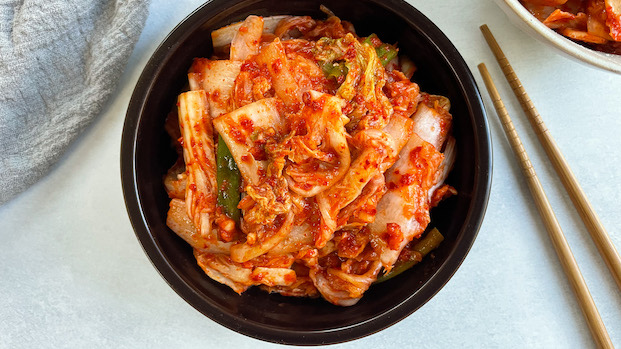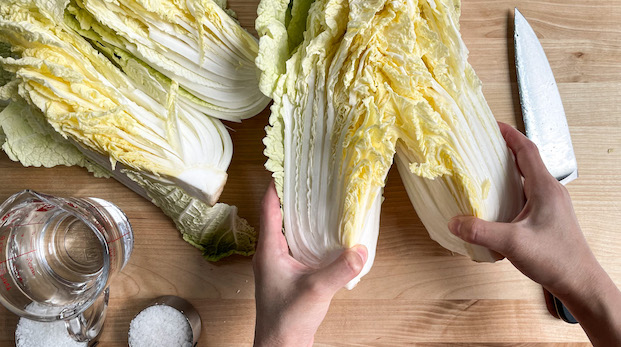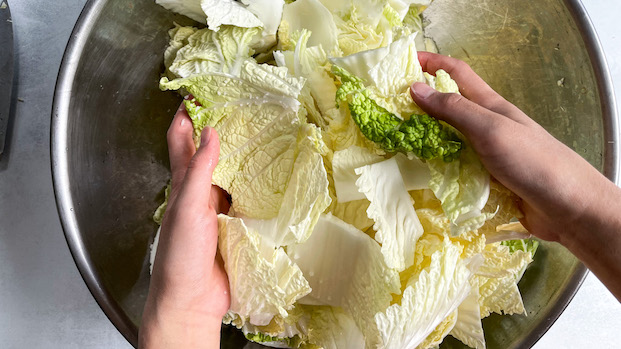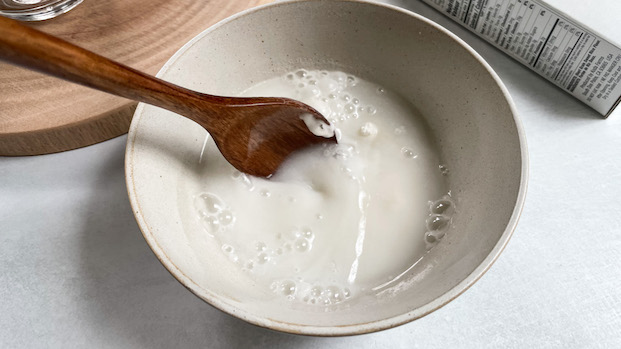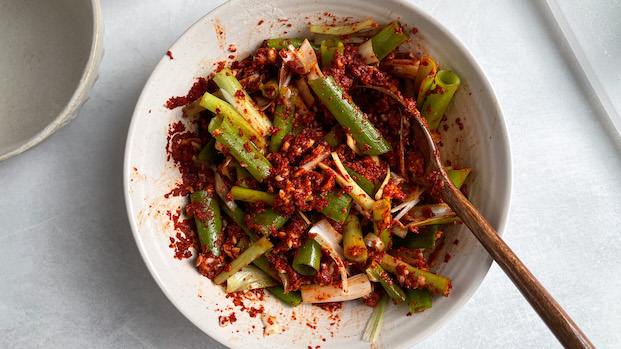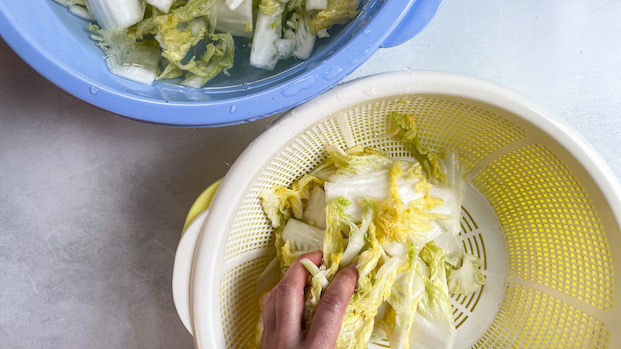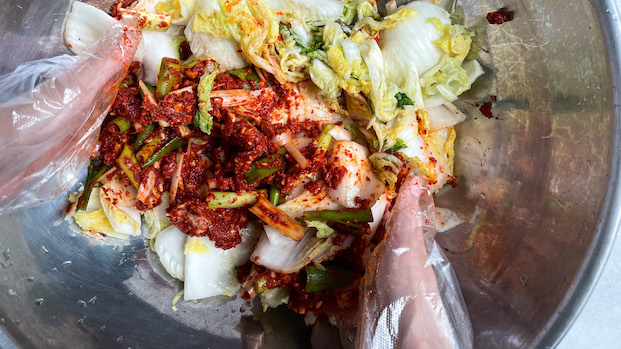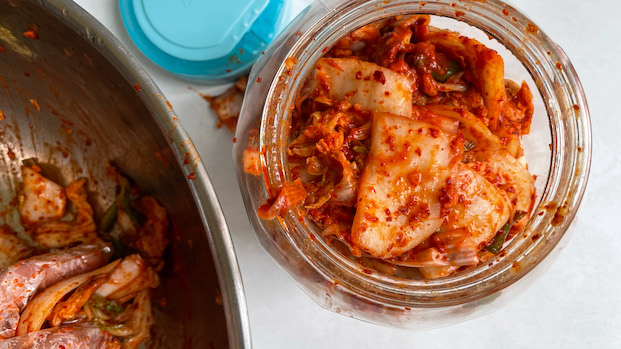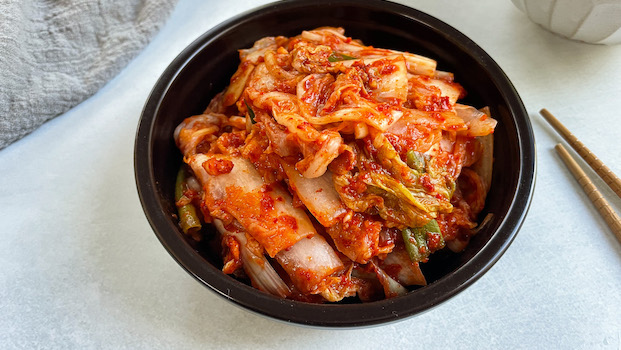How to Make Kimchi
Kimchi is a spicy, fermented cabbage dish that is widely used in Korean cooking. With just a few simple ingredients, you can make your own at home!
By Jin Park
Kimchi is a spicy, fermented cabbage dish that is widely used in Korean cooking. With just a few simple ingredients, you can make your own at home!
By Jin Park
Homemade kimchi? It's easier than you think! With our step-by-step guide, you'll have savory, spicy, ready-to-eat Baechu-kimchi (cabbage kimchi) in just a couple of days.
First, you'll want to prepare your napa cabbage. Rinse the outer layer of the cabbage, then pat dry. Cut the cabbage lengthwise from the core to the middle. Then, pull both sides away from the center leaving you with two equal parts. Repeat until you have four sections.
Trim any damaged or bruised areas since they can add bitterness in your kimchi. Slice away the core parts and discard. Cut cabbage leaves into pieces—roughly 2-3” long. Place them into a large mixing bowl and set aside.
Mix sea salt (reserving 1/3 cup) with water and stir until dissolved, then pour the mixture onto the cabbage. Next, sprinkle and distribute the reserved salt.
Toss the cabbage with both hands, making sure salt is mixed evenly. Wear gloves if you have sensitive skin.
Cover the mixing bowl with plastic wrap. This will help speed up the brining phase. You can also use a lid if you have one. Let the cabbage sit at room temperature for one hour.
The cabbage will be somewhat wilted at this point. Give it another toss, cover the bowl and wait another hour.
Put the rice flour in a small bowl and slowly add the hot water while stirring. Mix until smooth. This rice paste is a great thickening agent and also helps in fermentation. Let the mixture cool.
Make a spicy paste by combining minced garlic, gochugaru, anchovy extract, plum syrup and sugar in a medium size bowl. Add in cooled rice paste and stir well until well combined. Taste and adjust for heat, adding more gochugaru if desired.
Roughly chop the green onions, add them to the paste and mix well.
After two hours of brining, the cabbage is ready to be rinsed. Submerge the cabbage completely in cold water, then swoosh and drain. Repeat this step three times. Next, put the cabbage in a strainer or colander to drain completely. This step will clean your cabbage as well as wash away the saltiness.
Prepare gloves and a big mixing bowl. Combine the paste with the cabbage and mix until well incorporated.
Transfer the seasoned kimchi into a clean container. Give it a firm press to take out the air bubbles, leaving a bit of room at the top to prevent overflow. Place a lid on top and tighten. Clear glass jars are great for kimchi since they won’t leave a stain.
Let the kimchi jar sit unopened for 1-2 days at room temperature.
Your homemade kimchi is now ready to eat! Enjoy it with a bowl of warm rice or alongside your favorite Korean dinner!
